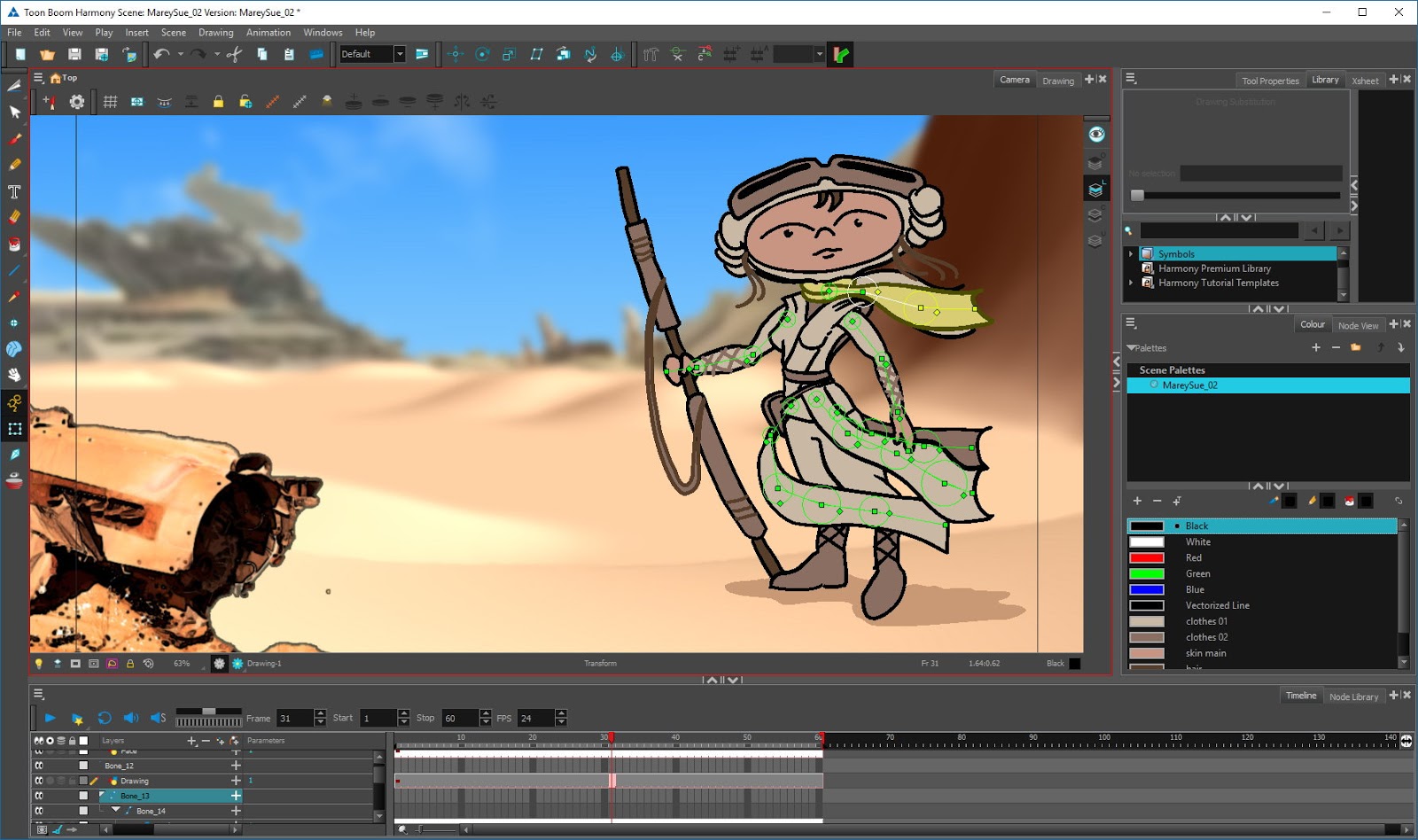

- Toon boom harmony premium deformers tweening how to#
- Toon boom harmony premium deformers tweening Patch#
- Toon boom harmony premium deformers tweening full#
- Toon boom harmony premium deformers tweening series#
What are the key things you consider and discuss when character rigging as part of a team? On a production you will rarely have time to go crazy with the rig, so always start with the most basic build and add more stuff only when schedule allows for it. You should have good relations with your animation team as they will be the ones giving you the most retakes. Usually you’re right in between design team and scene planning team. I would say, as a rigging artist, you create tools for the animators while staying on a tight schedule. How would you describe the role of character rigging artist in the wider production pipeline? Character rig demonstration provided by Juhas. If you need more control, you can always create a second drawing substitution and apply Envelope around your shape. Both ends can move individually so you can easily make a simple line Deformer through the shape. What are the different deformation types you explain in the tutorial?
Toon boom harmony premium deformers tweening how to#
If your animators know how to use Constraints, I recommend adding them to the build. With four-legged creatures, you may want to build different rigs for different scenarios. With humanoids, you can easily get away with linking and pegging everything to the hips. It’s all about the centre of mass and the way your animators plan to animate this creature. How does the process differ when rigging, say, an animal or a creature? This method works even on objects moved in Z-depth.
Toon boom harmony premium deformers tweening Patch#
You can go even further than that, you could make a patch in between both shapes (3rd shape) which would act as a mask, removing only the lines it’s overlapping.

By using Auto-Patch with Cutter, you can easily remove the lineart from a shape, but only when one shape overlaps the other. So the easy way around it is to separate lineart to a lineart layer and fill colour to colour art layer. You have to merge them together, but when you place one on top of the other, there’s a visible line overlapping the colour. Let’s say you have two shapes: An arm and a forearm. Especially when you work on flat coloured 2D characters with dark lineart. It’s a great conditional tool when mixed with Cutter.

Can you tell our readers a bit more about how it can be useful? You mentioned the Auto-Patch node in Harmony Premium. Character expression samples provided by Juhas. Without it, the rig artist spends too much time trying to make it work. If I’m being honest, I can’t find any alternative to this feature in other animation software. This tiny node is super powerful, especially when working on a character with visible black line-art. This results in smooth transitions between views and also makes the master controllers practical.

Toon boom harmony premium deformers tweening full#
You can make a full turnaround on one drawing substitution (one for each face part). What are the most important tools when doing this part of a rig, and why?
Toon boom harmony premium deformers tweening series#
A large part of the tutorial series is dedicated to the character’s facial features. Even if the design seems simple, you still have to add mouth charts, blinks, hair and make them work in all views. The complexity will depend on the design and animation style. What are the most challenging features of a human to rig? In the tutorials you draw and rig a human character. If it’s the main character - add all the features requested by your animation director, but always keep it simple! You don’t want animators to struggle with overly-complicated rigs. Build with simple shapes, and add deformers only if needed. What are the fundamentals to remember when building a good character rig?īuild only what you need based on the animatic. Watch his tutorials and read our interview with Juhas below!Īn episode at the end of Juhas’ rigging series on YouTube, featuring final touches on a character rig. Juhas also offered valuable advice on how character rigging and build artists can pitch themselves to the industry.Ī talented rigging artist with more than a decade’s experience in animation, Juhas is currently a Technical Supervisor at Lighthouse Studios, the team behind kids’ favourites such as Bug Diaries and If You Give a Mouse a Cookie. He covers his favourite uses of Harmony Premium’s features, and provides practical tips for improving workflow and organization. We spoke with Juhas, and he was kind enough to provide extra insights on his rigs. Providing an in-depth look at his own personal project made using Harmony Premium, these videos take users from initial character design through to a fully deliverable character model, ready to be animated! Interested in designing and rigging a 2D character for a professional-grade animated production? A new tutorial series from Piotr Bartosik (known online as Juhas) has you covered.


 0 kommentar(er)
0 kommentar(er)
